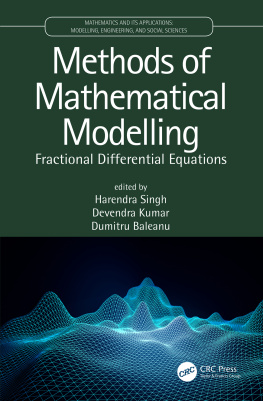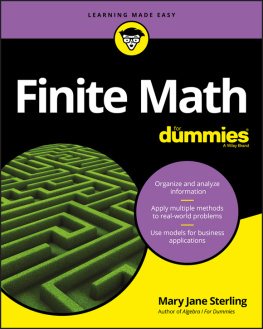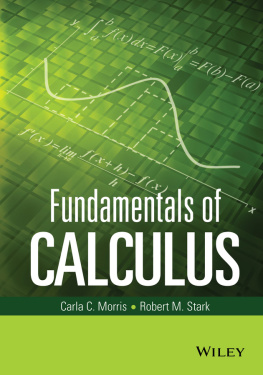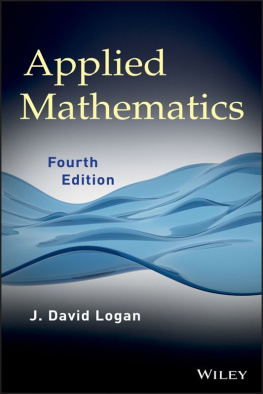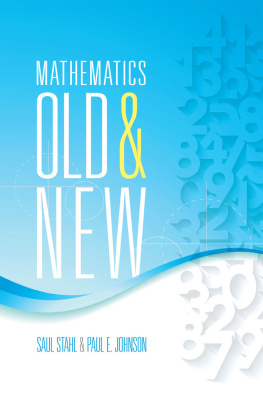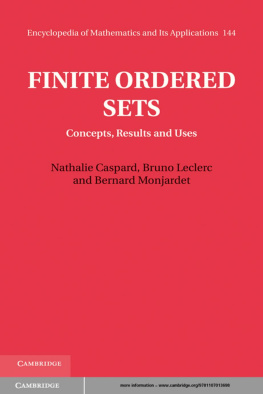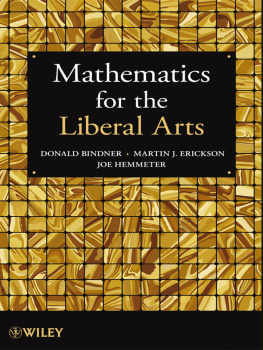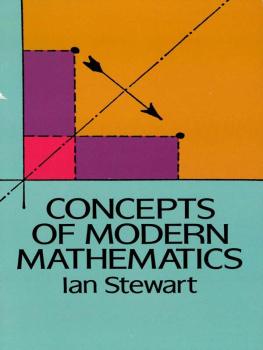
Copyright 2016 by John Wiley & Sons, Inc. All rights reserved
Published by John Wiley & Sons, Inc., Hoboken, New Jersey
Published simultaneously in Canada
No part of this publication may be reproduced, stored in a retrieval system, or transmitted in any form or by any means, electronic, mechanical, photocopying, recording, scanning, or otherwise, except as permitted under Section 107 or 108 of the 1976 United States Copyright Act, without either the prior written permission of the Publisher, or authorization through payment of the appropriate per-copy fee to the Copyright Clearance Center, Inc., 222 Rosewood Drive, Danvers, MA 01923, (978) 750-8400, fax (978) 750-4470, or on the web at www.copyright.com. Requests to the Publisher for permission should be addressed to the Permissions Department, John Wiley & Sons, Inc., 111 River Street, Hoboken, NJ 07030, (201) 748-6011, fax (201) 748-6008, or online at http://www.wiley.com/go/permission.
Limit of Liability/Disclaimer of Warranty: While the publisher and author have used their best efforts in preparing this book, they make no representations or warranties with respect to the accuracy or completeness of the contents of this book and specifically disclaim any implied warranties of merchantability or fitness for a particular purpose. No warranty may be created or extended by sales representatives or written sales materials. The advice and strategies contained herein may not be suitable for your situation. You should consult with a professional where appropriate. Neither the publisher nor author shall be liable for any loss of profit or any other commercial damages, including but not limited to special, incidental, consequential, or other damages.
For general information on our other products and services or for technical support, please contact our Customer Care Department within the United States at (800) 762-2974, outside the United States at (317) 572-3993 or fax (317) 572-4002.
Wiley also publishes its books in a variety of electronic formats. Some content that appears in print may not be available in electronic formats. For more information about Wiley products, visit our web site at www.wiley.com.
Library of Congress Cataloging-in-Publication Data:
Morris, Carla C.
Finite Mathematics : Models and Applications / Carla C. Morris and Robert M. Stark.
pages cm
Includes bibliographical references and index.
ISBN 978-1-119-01550-5 (cloth)
1. MathematicsTextbooks. I. Stark, Robert M., 1930- II. Title.
QA39.3.M68 2015
511.1dc23
2014042187
Preface
Mathematical development has recently grown at an exponential rate. The mathematics of computers, statistics, matrices, linear programming, and game theory, to name a few, has changed and expanded the landscape of mathematical influence. Many view films such as A Beautiful Mind, and Pi, plays such as Proof, and TV shows such as Numb3rs to witness a wider recognition of mathematics and enhance its awareness in daily lives.
Prior to World War II, basic college and university mathematics consisted mainly of college algebra and calculus. The enormous success of those Newtonian era mathematical discoveries in the development of physical sciences and engineering continues today.
War often brings scientific and technological advances, and World War II was no exception. Developments in the immediate post-World War II years and remarkable advances in automated computation led to new mathematics and to new uses for older mathematics.
Among the many post-World War II developments: three stand out that have become a basis for finite mathematics courses:
- Linear Programming
Linear programming, the mathematics for the optimal allocation of resources, has found wide usage in the cutting and planting of forests, automobile production lines, oil refining, hospital menus, and much more. A Google search actually returns millions of references.
- Matrix Algebra
The algebra of this mathematical subject is now vital to the operation of computers that store, move, manipulate, and analyze huge arrays of data and variables. It has wide usage in engineering, social, business, and health contexts. Leontief's Nobel Prize winning input output economic models of firms, governments, and nations are well known.
- Chance and Probability
With origins predating the 17th century, mathematical probability matured in the 20th century and with related topics has found applications in virtually every branch of science, technology, and commerce. Examples include the proliferation of medical tests with false negatives and positives, risk assessments, artificial intelligence usages of Bayes' Rule, tracking demographics and behavior with Markov chains, and the development of mathematical statistics.
Recognition of the fuller import of these three primary topics led to their aggregation into a new course, Finite Mathematics, in the 1960's. The course and its topics have these distinctions:
- Topics are mostly independent of one another.
- Topics often differ from pre World War II curricula.
- Topics deal with discrete or finite events from which the course and text derive their title. This contrasts with Calculus, which is based upon continuous variation.
- Finite mathematics is more a course title than a branch of mathematics marked by an intrinsic coherence. In a sense, it is a hybrid branch of mathematics.
While calculus remains fundamental to physical science and technology, its impact upon the post-World War II social, behavioral, life, health, business, management, and economic sciences has been markedly less. However, it is finite mathematics topics that have become more important to post-World War II business and social sciences applications. One expects finite mathematics topics to find a niche in college curricula.
While a finite mathematics course is often required at many colleges and universities, students in our classes range from freshmen to seniors. Although business, economics, finance, and management students are often the primary enrollment, other students often enroll and can easily benefit as the text and exercises span many disciplines in the life, natural, and social sciences.
The course typically features matrix algebra, linear programming, probability, and related topics. For a one-semester course, this text has ample material for teachers to enrich or offer a two-semester course, perhaps for honors students.
Many institutions have shown an interest in developing General Education guidelines to encourage student development in oral, written communication, and quantitative reasoning skills. Several of the exercises in this text were included with the idea that they would be well suited for instructors looking to aid students in developing skills that suit General Education guidelines. The exercises in this text may be completed with or without the use of technological aids. That decision is for the teacher.
About the Authors
Carla C. Morris has taught courses ranging from college algebra to calculus and statistics since 1987 at the Dover Campus of the University of Delaware. Her B.S. (Mathematics) and M.S. (Operations Research & Statistics) are from Rensselaer Polytechnic Institute, and her Ph.D. (Operations Research) is from the University of Delaware.
Robert M. Stark is Professor Emeritus of Mathematical Sciences at the University of Delaware. His undergraduate and doctoral degrees were awarded by, respectively, Johns Hopkins University and the University of Delaware in physics, mathematics, and operations research. Among his publications is the 2004 Dover Edition of Mathematical Foundations for Design with R.L. Nicholls.
Next page

